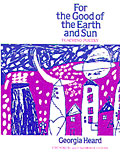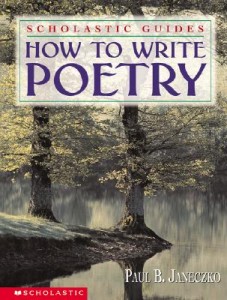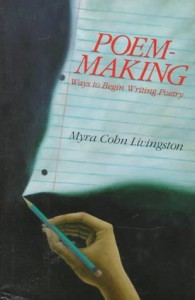Poetry is the language of our hearts and souls. It’s both meaning and music. It’s rhyme and rhythm, surprise and sound. Poetry is language compressed. It’s precision, image, and part of our common cultural language.
For all these reasons, kids need poetry as much as anyone. Search the keyword “Poetry” on the Common Core State Standards Initiative site and you *will* find it mentioned! A two-page list of signposts that spiral up the grades, growing in complexity. Here are two of the standards, taken from Grade 2 ELA.
Range of Reading and Level of Text Complexity:
By the end of the year, read and comprehend literature, including stories and poetry, in the grades 2-3 text complexity band proficiently, with scaffolding as needed at the high end of the range.
Craft and Structure:
Describe how words and phrases (e.g., regular beats, alliteration, rhymes, repeated lines) supply rhythm and meaning in a story, poem, or song.
Teachers know that their best teaching comes from their passions. As Georgia Heard says in Poetry Lessons to Meet the Common Core State Standards, “You can’t read a poem occasionally and expect students to develop a deep appreciation, understanding, and love of poetry.” Let poetry become your passion and part of your classroom’s fabric! Here are a few resources to help do just that.

Awakening the Heart: Exploring Poetry in Elementary and Middle School (Heinemann, 1999) and
For the Good of the Earth and Sun: Teaching Poetry (Heinemann, 1989), both by Georgia Heard, are wonderful books about teaching, writing, and encouraging poetry in your own life and the lives of your students. I’ve found chapter 4 in Awakening the Heart, on the meaning and music toolboxes, to be particularly helpful in teaching students about the “sense and song” of poetry.
How to Write Poetry by Paul Janeczko (Scholastic, 1999) is another favorite. I especially love the POETCRAFT sections on topics such as “Sound,” and “Creating Images.” Janeczko also includes tips from poets, suggested reading, and short “Try This…” prompts.
Poem-Making: Ways to Begin Writing Poetry (HarperCollins Publishers, 1991) by Myra Cohn Livingston covers an enormous amount of ground in short, easy-to-read chapters. It may have been written for children, but I’ve found it to be an easy and concise primer on poetry basics such as: voices of poetry, sound, rhyme, rhythm and metrics, form, and figures of speech. If you’re just getting started in poetry, this is a must have.












